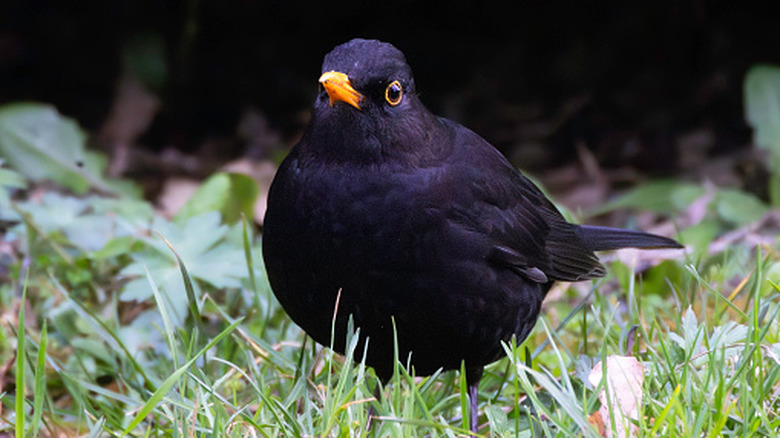What Types Of Birds Have Yellow Beaks?
Bird beaks come in a variety of shapes, sizes, and colors, including red, black, gray, brown, orange, gold, tan, and yellow. Many birds have yellow beaks, including the common blackbird, American robin, starlings, bald eagle, and magpies. All of these birds possess characteristics that make them unique.
Common blackbirds are found worldwide
Common blackbirds live near humans, and these black migrating birds can be found worldwide. They populate Asia, Africa, Europe, Oceania, and North America. Blackbirds live in a variety of habitats, including forests and woodlands. You may see common blackbirds in parks and gardens where there is enough tree cover for them to hide. These birds are omnivores and eat fruits, such as berries, apples, grapes, and cherries as well as some seeds, insects, earthworms, and spiders. The average life span of a common blackbird ranges from 2 to 21 years.
American robins frequent backyards
It's not uncommon to find American robins in backyards and parks. These birds also live in forests, grasslands, and woodlands. American robins are the most widespread species in the thrush family in the United States. These birds are omnivores and eat earthworms, insects, and berries. You can often see these birds hopping around while they're hunting for food. American robins begin mating sooner than many other birds, and they can lay up to three clutches in a single breeding season. Parents are aggressive about defending their nests.
The European starling
European starlings were introduced into North America in 1890. These birds are now so common that some consider them pests. You can find starlings in cities, farms, open groves, parks, and fields. Starling birds change from brown with white spots in the winter to a dark purplish-green iridescent color in summer. Interestingly, these birds change colors without shedding their feathers. In the fall, starlings grow new feathers with white tips. By the time spring arrives, the white tips have worn off, leaving the rest of the feathers, which are dark in color.
Starlings are not quiet birds; they are loud and boisterous. Starlings eat insects, including caterpillars, beetles, flies, and grasshoppers as well as a variety of seeds and berries. Female starlings lay two broods each year, typically containing four to six eggs each. Both parents incubate the eggs and take care of the young after they hatch.
The large bald eagle
The bald eagle is one of the biggest birds in North America. The bald eagle is a bird with a yellow beak, white head, and dark brown body and wings. These birds can be found on coasts and close to rivers, lakes, reservoirs, and marshes. Although the bald eagle may have a yellow beak, you are more likely to be able to identify a bald eagle by its white head and white tail.
Bald eagles mostly eat fish, such as salmon, herring, catfish, and carp. These birds also eat ducks, muskrats, jackrabbits, and carrion. Female bald eagles typically lay one to three eggs, and both parents incubate them in the nest for approximately 34 to 36 days. Both parents help care for their young for the first several weeks after they hatch, bringing food, tearing it into pieces, and feeding it to them.
The magpie varieties
Yellow-billed magpies can only be found in California while black-billed magpies can be found across North America, Europe, and Asia. A magpie's diet varies with the seasons. For instance, these birds eat a lot of acorns in the fall and winter months and grasshoppers in the summer.
Female magpies lay one brood each year containing five to eight eggs. The female magpie incubates the eggs while the male brings food to her. Incubation lasts approximately 18 days. Upon hatching, both parents feed their young. Parents may continue to feed their young for several weeks after they leave the nest.
